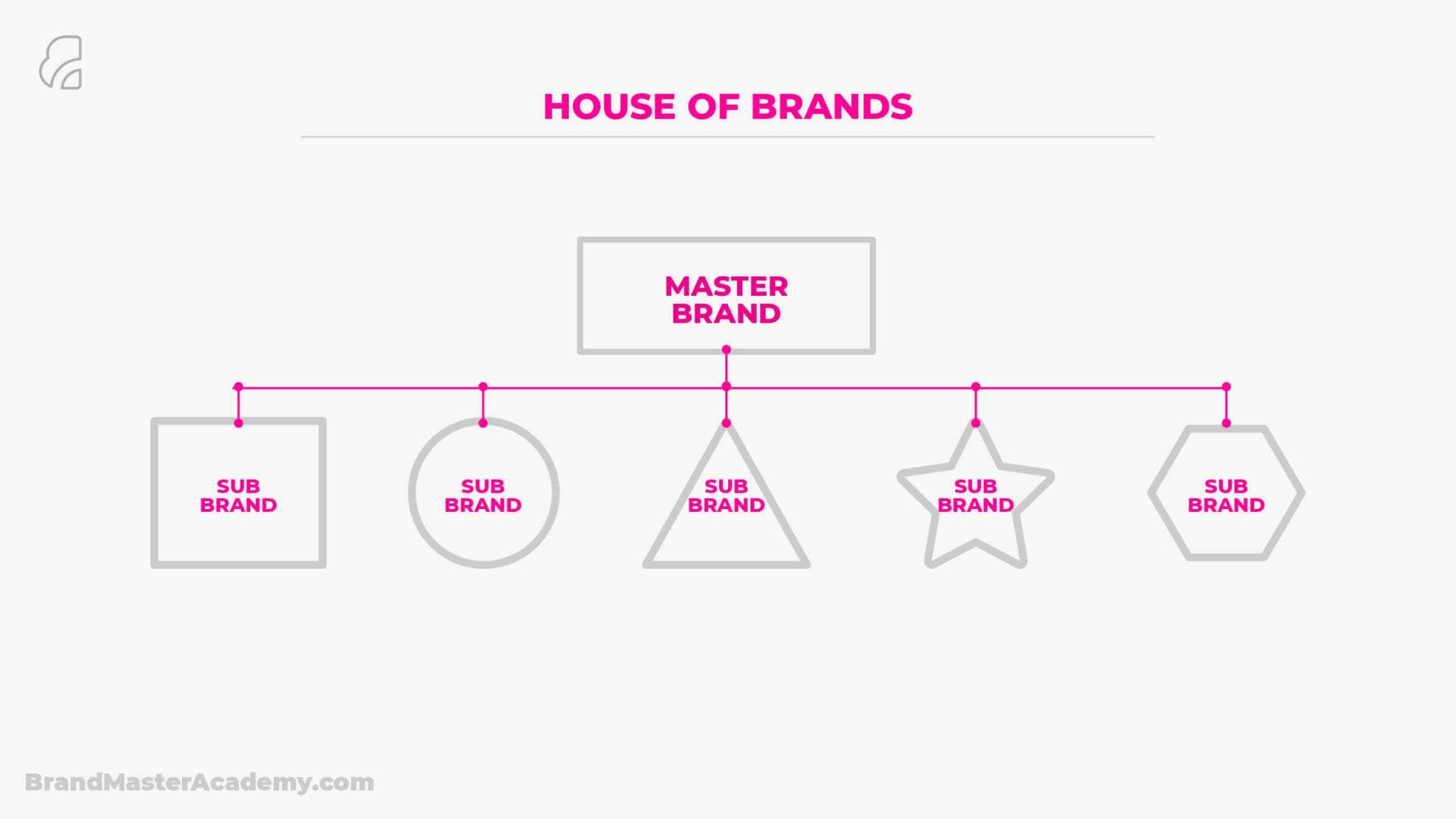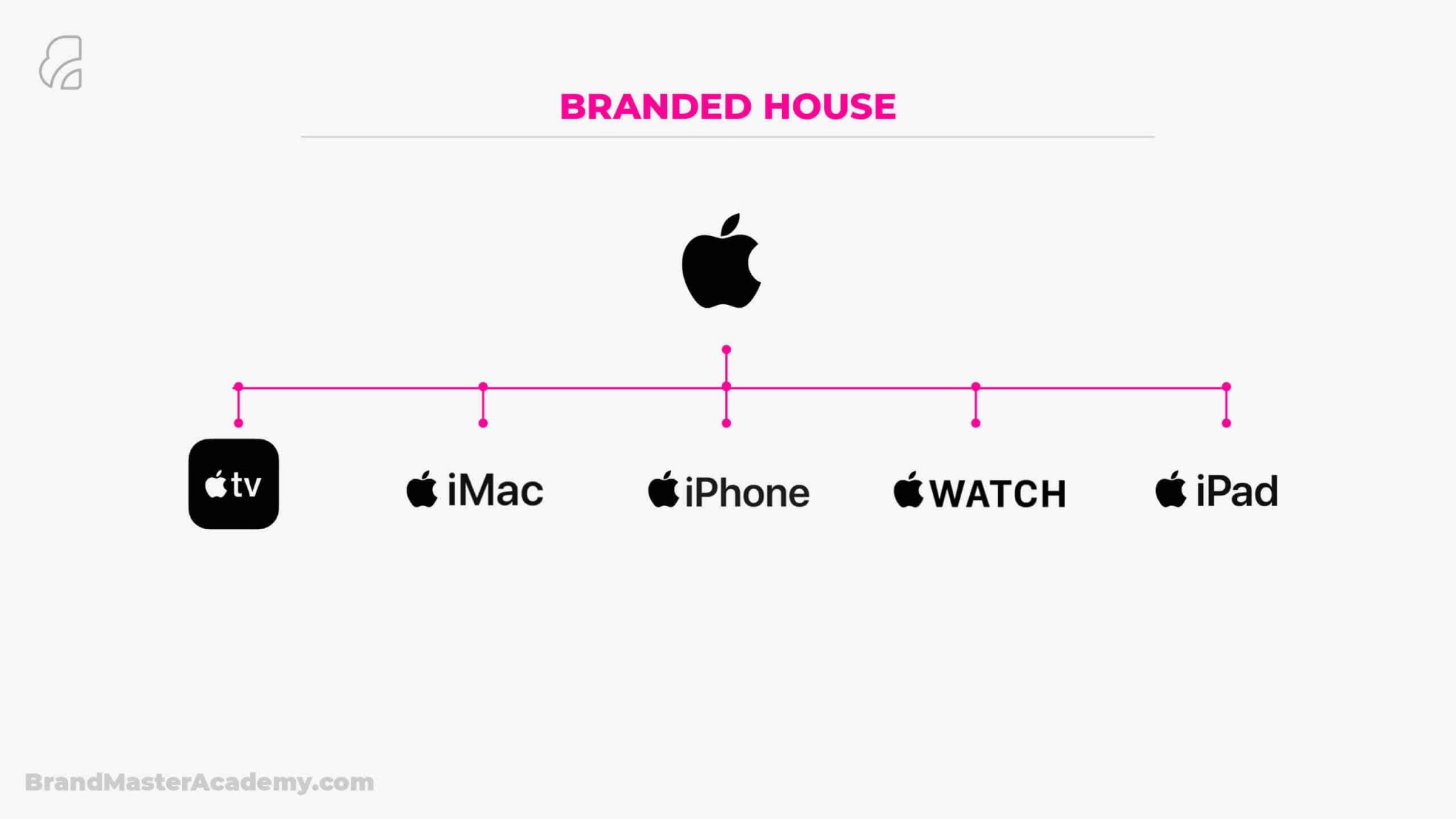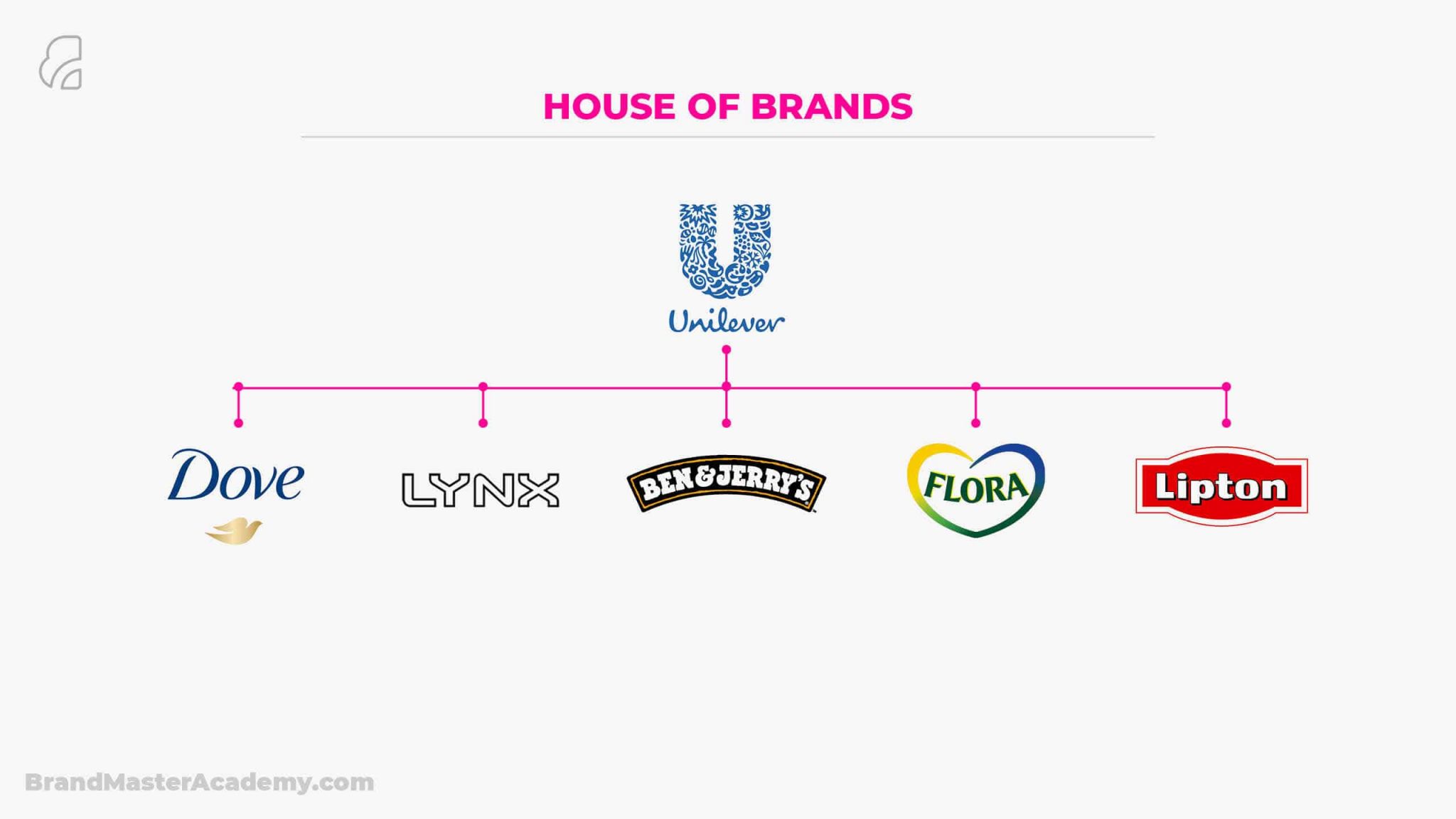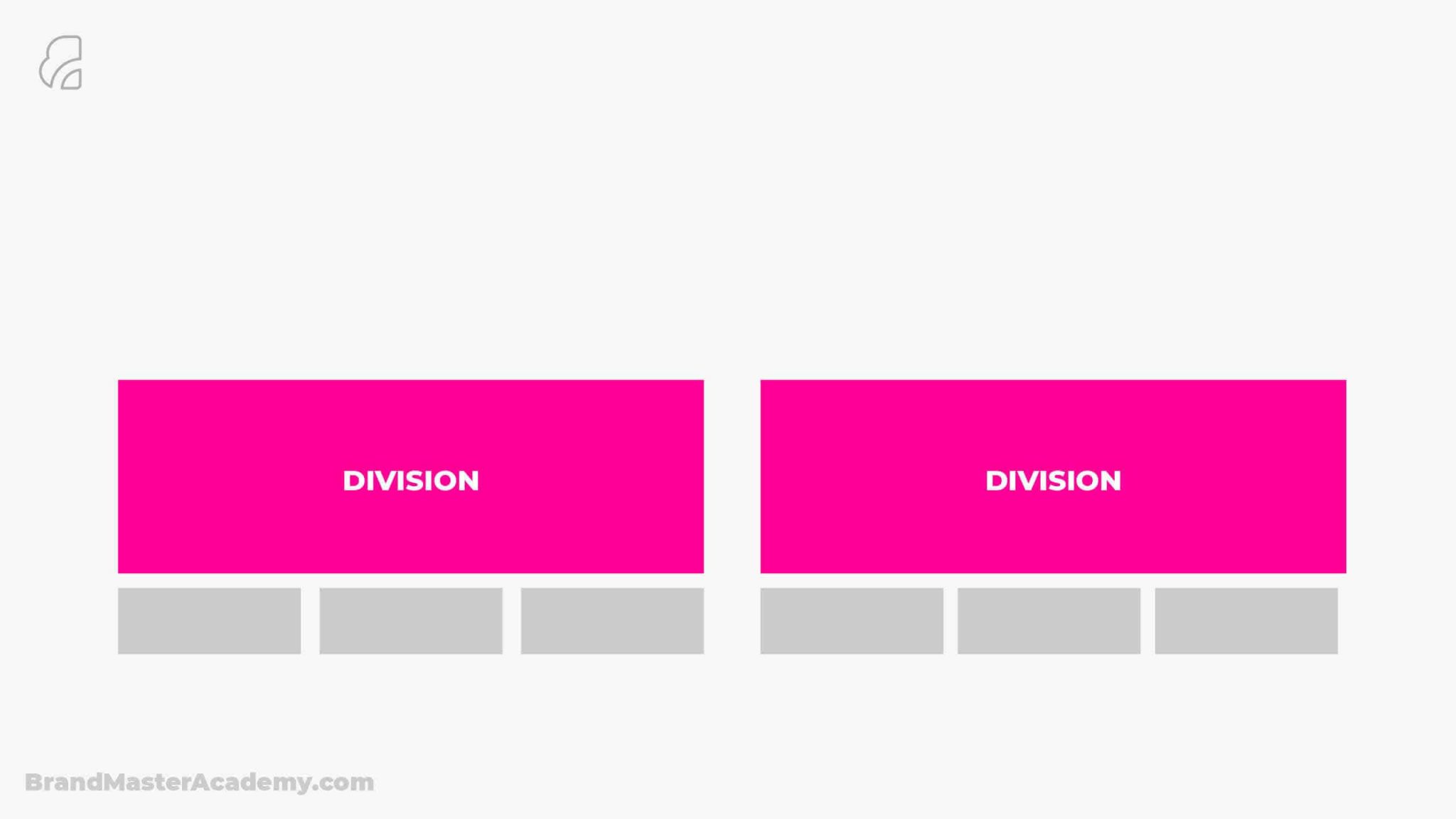When it comes to building a brand, few terms are revered and sought after more than clarity.
Initially, clarity is focused on the position and messaging. But, as different brands grow, clarity of structure becomes critical — and that’s where brand architecture takes centre stage.
Brand architecture helps brands to organise and structure a framework to allow for independent brand equity, enhanced focus and highly targeted communication.
In this article, we’re breaking down what brand architecture is and how you can leverage an effective brand structure strategy to construct multiple brands and maximise structured growth.
What Is Brand Architecture?

Brand architecture is the discipline and technique used by brand strategists to organize and structure multiple subdivisions of a master brand.
These sub-divisions can come in the form of new products, services, sections or entire companies (such as after a merger or acquisition) with their own individual offerings.
The architecture of the brand illustrates how the sub-brands of a master brand are organised and the relationship they have with one another and the master brand itself.
Brand Architecture Definition

Brand architecture can be distilled and defined as:
The structure of brands within an organisational entity
Think of brand architecture as the organisational chart of brands.
Instead of structurally positioning personnel of the organisation, the chart structurally positions brands of the organisation.
PRO Brand Strategy BluePrint
Build Brands Like A Pro Brand Strategist

Why Is Brand Architecture Important?

As the role of brands has evolved, effective brand architecture models have followed suit. This is because both new and established brands have to understand the consumer experience and flex to how they perceive its brand promise — and value proposition.
Did you know?
Consistency in branding can boost sales by 33%.
The importance of brand architecture is directly connected to what is important to your corporate brand’s target audience.
Achieving clarity within your existing brand internally starting with key stakeholders and working your way down is paramount in sharing that brand identity externally.
If executed properly, you can build a strong brand with an effective brand architecture that supports the following
Creative teams crave clarity
Bold stories elicit attention
Cross-selling boosts the bottom line
Inclusive cultures are born
Explore Brand Strategy
Programs & Tools
What Are The Key Elements Of Brand Architecture?

Given that brand architecture is how a business formally organises, labels, and showcases its product and service offerings, this audit will help ensure consistency, refine the strategy, and position the brand for maximum long-term growth.
The methodology for the brand architecture audit should include the following steps:
Document your organisation’s current brand architecture to indicate the hierarchy, relationships, and associations with each other — and the master brand (or corporate name)
Establish a key set of questions and considerations that will inform how your business offerings will be positioned internally and externally from the parent brand down
Chart your go-forward brand strategy in the context of various potential scenarios that should be evaluated in finalising your brand architecture strategy and framework
Nail down your brand label guidelines per the overarching brand architecture principles
Officially communicate the brand architecture standards at every level of the organisation to establish transparency, achieve buy-in, and ensure long-term compliance
A continuation of the existing structure in this case would result in untailored messaging, overlooked segments and unfocused positioning.
Using brand architecture however, would allow for sub-brands to emerge to meet the emerging market segments, speak more directly to them and grow more intimate relationships and brand equity independent of the master brand.
Brand architecture therefore fosters growth for growing brands.
How Brand Architecture Fosters Growth

The vast majority of businesses present their products, services and offerings under a single entity or parent company, and in most cases this structure is effective.
A maturing brand, however, often coincides with a growing suite of new products, services and offerings, which broaden the target audience which in turn, dilutes the message.
As the suite of offers grows and the audience expands, more specified segments of the growing audience emerge.
This provides an opportunity for next-level brand management in which the brand speaks more directly and more specifically to each segment.
A continuation of the existing structure, in this case, would result in untailored messaging, overlooked segments and unfocused positioning.
Using a robust brand architecture framework however, would allow for sub-brands that sit below a parent company to emerge to meet the emerging market segments, speak more directly to them and grow more intimate relationships and brand equity independent of the master brand.
A strong brand with a solid brand architecture therefore fosters growth for growing brands
Brand Architecture Strategy Advantages

The term “brand architecture” can be daunting for business owners and you might feel that it only really exists for the giant brands of the world such as Apple or Unilever.
The truth however, is that many small to medium businesses (and new brands) can also reap the benefits of a strategic structural organization that flows down to performance.
Small, medium or large, the benefits of a solid brand architecture framework are many.
Focused Target Audience

Segmenting broad audiences into smaller segments allows for hyper-targeted communication.
A company’s brand voice and messaging should speak directly to its audience in a way that makes them feel understood, earn trust and affection from their followers.
Marketing Efficiency

Leveraging a more focused audience increases the cost-effectiveness of multi-channel marketing strategies as audiences have more attention to offer brands with highly tailored messaging.
The opportunities that exist for cross-promoting between individual brands further increases efficiency and effectiveness.
Clarity Of Position

A brand with multiple products, services, divisions and companies that don’t leverage time-tested brand architecture models find it increasingly difficult to occupy a distinct place in the mind of their audience.
The broader the brand’s offerings and audience, the less defined their position which hurts its brand equity, and ultimately it’s more likely all brand extensions become insignificant.
Leadership Conviction

As a brand grows, it can become increasingly difficult to see the forest for the trees.
A clearly illustrated brand architecture sets the scene and illuminates the framework on which the broader business is being constructed.
This clarity not only helps with confidence and conviction at the stakeholder level, it also supports decision-making and the long-term vision.
Enhanced Brand Awareness

Products, services, divisions and companies that remain under a single entity (or master brand), are entirely reliant on that entity for brand awareness.
Even if brand awareness of that entity is high, that doesn’t always translate to high awareness of the sub-divisions of the organisation.
With brand architecture, each sub-division has an opportunity to stake a claim for its own brand awareness and brand identity with specified messaging talking to specific strengths, benefits and outcomes across marketing strategies.
Traction in the market therefore is either less dependent on or entirely independent of the master brand.
Develop & Defend Brand Equity

Brand equity is the value of the brand derived from consumer perception.
With each sub-division or individual brand boasting its own identity, each has the opportunity to shape its specific customers’ perceptions and ultimately grow its own brand equity.
Types Of Brand Architecture

Brand architecture tends to fall into one of four specific structures, which are:
Branded House
House Of Brands
Endorsed Brands
Hybrid Brands
Let’s dive deeper shall we?
Branded House

A branded house structure is most common when a master brand has well defined product or service offerings that are tightly related to how the audience consumes the brand’s’ offerings.
The structure of the brand names and identity design of the sub-brands are usually a derivative of the master brand making its messaging and appearance feel and sound distinctly familiar.

The branded house architectural structure leverages the often well-established brand equity, awareness, association and customer loyalty.
In this case, the consumer will happily adopt a sub-brand without question, due to the relationship and trust built by the master brand.
Branded house examples include household names such as:
Apple
FedEx
Virgin
Coca-Cola
House Of Brands

While a branded house contains a collection of sub brands all deriving from the master brand in terms of position, identity and messaging, a house of brands is a little different.
In this brand architectural model, the master brand — which operates primarily from an organisational and investment point of view — houses a suite of distinctly different brands all operating independently of one another.
Master brands operating under such structures often have a well-diversified target audience across multiple industries, while remaining relatively unknown to consumers.
Target Audience

These audiences are served through multiple brands offering products and services across a wide range of industries and sub industries though the vast majority of consumers are completely unaware of any brand relationships.
The main benefit of this structure is in the independence and flexibility the sub-brands enjoy under the parent brand.
Essentially, they aren’t tied to the position, appearance or messaging of the master brand and can address its audience with bespoke communication.
House of brand examples include:
P&G
Unilever
General Motors
Newell
Endorsed Brands

The endorsed brand architecture approach is a halfway point between the house of brand and the branded house structures.
In this setup, you have a sub-brand like Dove that is endorsed by the master brand, Unilever, with a reference to that brand throughout their communication.
This allows the sub-brands more flexibility than the branded house structure in terms of its positioning, appearance and messaging while still leveraging the benefit of the master brand’s equity through the endorsement.
Essentially, the sub-brand establishes itself in its own world while consistently and publicly holding the hand of its master brand.
Endorsed brand examples include:
Nestle Kitkat
Sony Playstation
Polo by Ralph Lauren
Marriot Hotels
Hybrid Brands

The Hybrid Brands structure is an emerging trend set by modern brands, which is all about subtlety.
Within this hybrid brand architecture, sub-brands subtly reference the master brand without overly referencing its name or appearance.
In essence, the sub-brands follow the same “style” of the parent brand in a very obvious way (without being the same) so the sub-brands display a distinct resemblance to the point that it “feels like” the parent brand.
Google (a brand owned by Alphabet) is the best example of a hybrid with its sub-brands including
Chrome
Ad Sense
Analytics
Hangouts
Maps
Each of these sub-brands uses the Google colour palette and/or clean graphic style and without over referencing the master brand, still very much “feels like” a Google brand.
Brand Architecture Examples

Apple Brand Architecture Example
[Branded House]

Apple is without a doubt the most recognized example of a branded house.
Every one of Apples products is separately branded including:
iMac
MacBook Pro
iWatch
iPhone
While some might argue that these aren’t separate brands, simply products of a single brand, each one is carefully and meticulously named and branded separately while adhering to very rigid guidelines.
Each of Apple’s sub-brands enjoys access to the brand equity Apple has amassed over the years, while attempting to establish itself in the market.
Unilever Brand Architecture Example
[House Of Brands]

Unilever is one of the biggest and most well-known examples of a house of brands and although most consumers recognize their sub-brands, the vast majority don’t know the Unilever brand.
That’s because the House Of Brands structure offers the freedom of sub-brands to build their own brand equity without reference to the master brand.
Unilever owns over 400 sub-brands including:
Dove
Lynx
Lipton
Ben & Jerry’s
Flora
Each one of these brands has earned their own trust and brand equity by speaking directly to who their consumers are and what they care about which would not be possible under any other structure of ownership.
Over To You
The right brand architecture strategy for your business depends on many different variables.
With well-defined guidelines, consistent reviews, and transparent communication from the inside out, your brand portfolio can help maintain an edge over the competition.
Since brand architecture is often a topic aligned with brand growth though when considering the vision of the brand and projected growth, establishing a structure for growth is worth considering.
For new brands, this may come in the form of splintered products or services that are named and developed with growth in mind.
Either way, if you’re a brand strategist or you have your hands on a brand that you expect to grow, consider implementing a brand architecture framework for brand growth.
I’d love to hear from you about your experience or challenges when it comes to brand architecture.
Let me know in the comments now!
On-Demand Digital Program
Brand Master Secrets
Make the transition from hired-gun to highly valued brand strategist in less than 30 days. The systems, frameworks and tools inside this comprehensive program are all you need to level up.










The New Strategic Brand Management is a classic academic book in the field of branding. In our opinion, it is the best one to understand the fundamentals of strategic brand management. We highly recommend you to read it if you work in the field of marketing or brand management. It is also perfect for university students who want to understand the different concepts and strategies related to branding and brand management.
Thanks for the recommendation
I was able to find good information from your blog posts.
Great to hear thank you
Thank you very much for the Information. It was a really great help for my Branding exams, your contagiousness is pretty awesome!!!
Thank you very much for the Information. It was a really great help for my Branding exams, your contagiousness is pretty awesome!!!
Cheers Donald ????